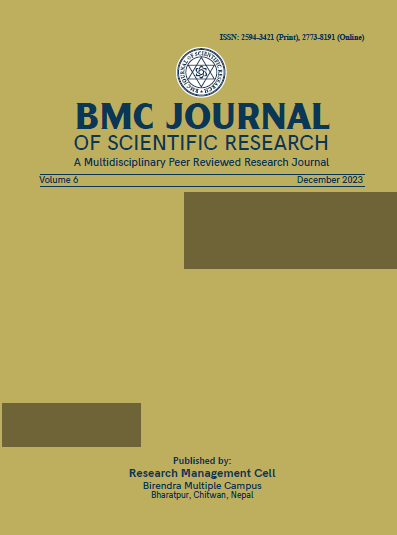Theoretical Investigation of the Thermodynamic Properties of Lead-free Ternary Alloys Sn-Sb-Bi and their Subsystems
DOI:
https://doi.org/10.3126/bmcjsr.v6i1.60950Keywords:
Binary liquid alloys, excess Gibbs free energy, lead-free solder alloys, molecular interaction volume model, ternary liquid alloys.Abstract
The concentration-dependent properties, like the constituents’ activities for the binary liquid alloys like Sb-Sn at 905 K, Bi-Sn at 600 K, and Bi-Sb at 1200 K, and the integral Gibbs free energy of mixing, ΔGXS, of the correspondent alloys were computed using the molecular interaction volume model (MIVM). Further, the model has been used to compute the activities of the component Sn in the ternary Sn-Sb-Bi system at 900K at the three cross-sections, i.e., Sb:Bi = 1:3, 1:1, and 3:1. The theoretical data have been analyzed with the corresponding experimental data accessible in the literature. An acceptable concurrence has been obtained, with some inconsistencies. The activities of the ternary alloys along the three cross-sections, i.e., Sb:Bi = 1:3, 1:1, and 3:1, show that the deviations change from positive to negative with increasing Sb content. The results confirm that MIVM is a good model for estimating the thermodynamic properties of binary and ternary systems.
Downloads
Downloads
Published
How to Cite
Issue
Section
License
Copyright (c) 2023 Research Management Cell, Birendra Multiple Campus

This work is licensed under a Creative Commons Attribution-NonCommercial-ShareAlike 4.0 International License.




